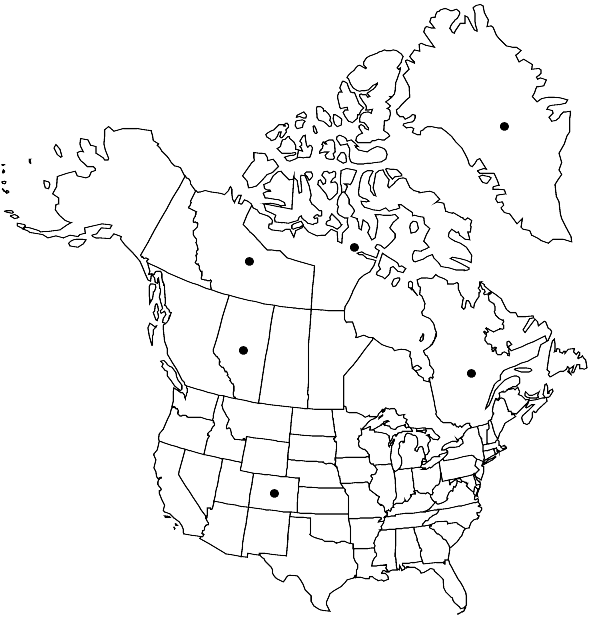Grimmia elongata
in J. Sturm et al., Deutschl. Fl. 2(15): plate 14. 1816,.
Plants in dense patches, reddish brown to blackish green. Stems 1–4 cm, central strand present. Leaves lanceolate, keeled, not plicate, one margin commonly narrowly recurved, awns 0.1–0.5 mm, lower leaves muticous, costal transverse section weak at base, semicircular distally; basal juxtacostal laminal cells elongate, straight, somewhat thick-walled; basal marginal laminal cells rectangular with straight walls, often hyaline; medial laminal cells short-rectangular, sinuose, thick-walled; distal laminal cells 1-stratose, not bulging, marginal cells 2-stratose, not bulging. Sexual condition dioicous, perichaetial leaves not enlarged. Seta straight to slightly arcuate, 1.5–2.5 mm. Capsule occasionally present, emergent to shortly exserted, yellow-brown, ovoid, exothecial cells variable, quadrate to rectangular, thin-walled, stomata present, annulus of 1–3 rows, operculum conical to rostrate, peristome present, fully-developed, papillose.
Habitat: Damp acidic volcanic rock and sandstone, high elevation forests to tundra
Elevation: moderate to high elevations (400-2400 m)
Distribution

Greenland, Alta., N.W.T., Nunavut, Que., Colo., Mexico, Central America, South America, Eurasia, Africa.
Discussion
Grimmia elongata is a widely distributed species mainly occurring above 2000 m, and with a preference for acidic sandstones and volcanic, damp, north-facing outcrops and ledges. It seems to be uncommon in North America, having been collected only occasionally and from widely separated localities. However, the wide distribution of G. elongata across the Northern Hemisphere suggests that it may be more common on this continent than collection records indicate. Cao T. and D. H. Vitt (1986b) noted that in North America, specimens of G. elongata would be confused most likely with G. donniana, as they considered the two species to be closely related. However, these species are distinctly different in a number of clear characters: G. elongata is reddish brown, muticous or short-awned, has one leaf margin recurved and is dioicous. In contrast, G. donniana is green to black, long-awned, has plane leaf margins and is autoicous. These characters lead us to believe that these species are not closely related; H. C. Greven (2003) believed that G. elongata is most closely related to the Himalayan endemic G. redunca Mitten.
Selected References
None.